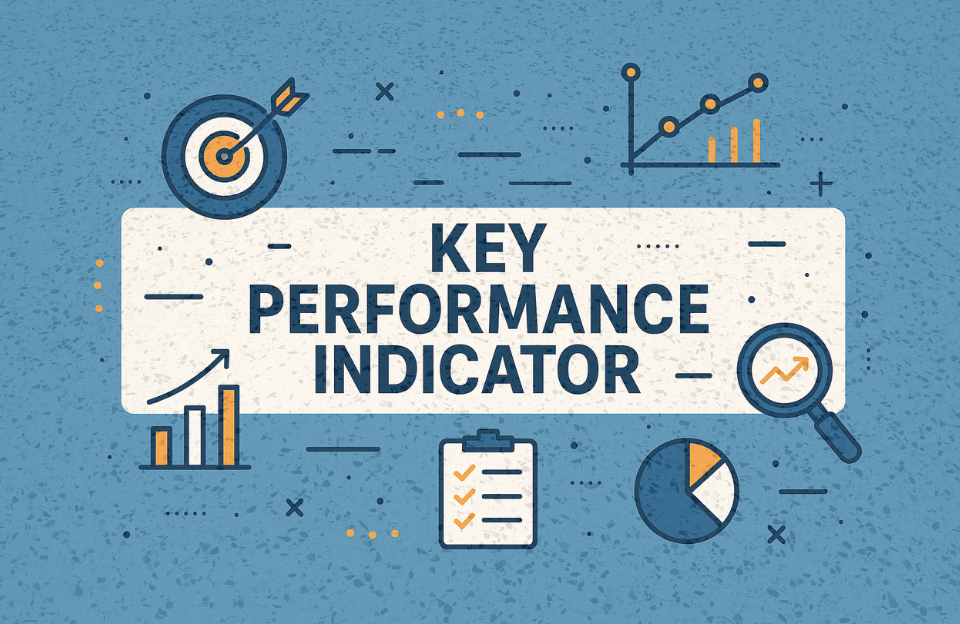What Are Key Performance Indicators (KPIs)?
Key Performance Indicators (KPIs) are measurable values that indicate how effectively a business is achieving its strategic and operational goals. They help organizations stay focused, align teams, and track progress toward meaningful outcomes.
Whether you’re monitoring website traffic, sales conversion rates, or customer retention, KPIs provide a data-driven way to measure success and make better decisions.
Why KPIs Matter
- Clarity: KPIs clarify what success looks like and help align teams around specific objectives.
- Accountability: They provide a foundation for performance review and responsibility.
- Focus: KPIs filter noise and guide attention to what truly matters for growth.
- Improvement: Regular tracking allows for iterative optimization and course correction.
Without well-defined KPIs, businesses risk operating blindly. Teams may waste time on tasks that don’t drive impact, and strategic decisions could be based on gut feeling instead of solid data. KPIs turn vision into measurable action—and allow for real-time performance monitoring across departments.
Types of KPIs
KPIs vary based on industry and business model. However, they can be broadly categorized into the following types:
1. Financial KPIs
- Revenue growth
- Net profit margin
- Customer Lifetime Value (CLV)
- Return on Investment (ROI)
2. Marketing KPIs
- Cost Per Acquisition (CPA)
- Click-Through Rate (CTR)
- Conversion Rate
- Organic traffic growth
3. Sales KPIs
- Sales pipeline velocity
- Average deal size
- Win rate
- Quota attainment
4. Customer KPIs
- Net Promoter Score (NPS)
- Customer Satisfaction (CSAT)
- Churn Rate
- Customer Retention Rate
Leading vs. Lagging KPIs
It’s important to distinguish between leading and lagging indicators. Lagging KPIs measure outcomes (e.g., revenue, churn), while leading KPIs predict future performance (e.g., number of demos booked or marketing qualified leads). A balanced mix helps teams react quickly while staying aligned with long-term results.
SMART Criteria for Setting KPIs
To be effective, KPIs must follow the SMART principle:
- Specific: Clear and well-defined
- Measurable: Quantifiable and trackable
- Achievable: Realistic based on resources
- Relevant: Aligned with business goals
- Time-bound: Has a set timeframe for evaluation
Real-World Example: KPI-Driven Growth at Spotify
Spotify uses KPIs across departments to guide strategic growth. For example:
- Marketing: Tracks monthly active users (MAUs) and user acquisition cost
- Product: Monitors average listening time per user
- Customer Support: Measures first-response time and CSAT score
These KPIs allow Spotify to test, improve, and scale its service effectively while keeping teams aligned and accountable.
How to Choose the Right KPIs
There’s no one-size-fits-all approach. Here’s how to find KPIs that work for your business:
- Start with your business objectives (e.g., increase revenue, improve satisfaction)
- Identify key levers that drive those objectives
- Select 3–5 KPIs per goal—don’t overdo it
- Ensure you have reliable data sources to track them
Additionally, involve stakeholders from multiple departments in the KPI definition process. Sales, marketing, finance, and operations may all have different perspectives, and collaboration ensures alignment across the organization. KPIs should also be periodically reviewed and refined as strategies evolve or market conditions shift.
Dashboard Tools to Track KPIs
Consider using these tools to visualize and monitor your KPIs:
- Google Looker Studio: Great for custom marketing dashboards
- Klipfolio or Databox: Connects to multiple data sources
- HubSpot or Salesforce: Built-in KPI tracking for sales and marketing
- Excel or Google Sheets: Simple but effective for early-stage KPI monitoring
More advanced businesses often use Business Intelligence (BI) platforms like Power BI or Tableau. These allow for in-depth segmentation, benchmarking across timeframes, and the creation of interactive reports for teams and management.
Conclusion
Key Performance Indicators (KPIs) are the foundation of data-driven decision-making. They not only track progress but also reveal opportunities, weaknesses, and growth potential.
Start small, align KPIs with your goals, and consistently act on what they reveal. Over time, smart KPI use can unlock operational efficiency, better marketing, and sustainable business growth.
In today’s fast-paced digital landscape, KPIs are not optional—they are essential. The businesses that win are those that measure what matters and turn insights into action.




